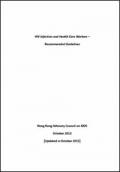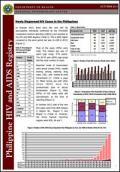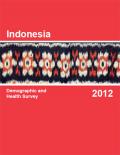What's New
Displaying results 3461 - 3470 of 4914

Resource | Guidelines,
The Hong Kong Advisory Council on AIDS formulated the “HIV Infection and the Health Care Workers – Recommended Guidelines” in 1994, which was subsequently updated and reprinted in 2003. As scientific knowledge expanded and new developments took place both internationally and locally over the last decade, the Council has reviewed and revised the Guidelines accordingly. In the process, the views and feedback of a variety of stakeholders including those in the HIV and health care fields were actively sought. The public was also consulted before the Guidelines (October 2013) were finalised. The invaluable input of these organizations and individuals is gratefully acknowledged. In October 2015, this Guidelines saw further update on the current operation of the Expert Panel on HIV Infection of Health Care Workers, and time-limited information was removed.
The Guidelines aims to provide relevant and concise information and guidance for addressing the complex and sensitive subject of HIV infection and health care workers.

Resource | Fact Sheets,
In October 2013, there were 491 new HIV Ab sero-positive individuals confirmed by the STD/AIDS Cooperative Central Laboratory (SACCL) and reported to the HIV and AIDS Registry (Table 1). This is 66% higher compared to the same period last year (n=295 in 2012).
Most of the cases (94%) were male. The median age was 27 years (age range: 4-76 years). The 20-29 year (60%) age group had the most number of cases.

Resource | Publications,
Myanmar recognizes the HIV epidemic as one of its most serious health challenges: AIDS is one of the priority diseases in the National Health Plan. The country is committed to achieving a series of national and global strategic targets. The second National Strategic Plan on AIDS 2011–2015 (NSP II), which guides Myanmar’s AIDS response, identifies three strategic priorities – HIV prevention, a comprehensive continuum of care for people living with HIV (PLHIV), and mitigating the impact of the disease on PLHIV and their families.

Resource | Publications,
This Technical Paper is part of the Review of Resources: Gender-Based Violence against Key Populations – an activity commissioned by the Gender Technical Working Group (TWG) of the President's Emergency Plan for AIDS Relief (PEPFAR).
The activity was implemented by AIDSTAR-Two, through the International HIV/AIDS Alliance and Project Partners (global key population networks/expert consultants1), in collaboration with Management Sciences for Health. The activity’s aim was to contribute to the ability of PEPFAR and its partners to better understand and respond to gender-based violence (GBV) against four key populations - sex workers, men who have sex with men (MSM), transgender people and people who inject drugs (PWID) - and, in turn, to reduce HIV risk among such communities, their sexual partners, friends and family.

Resource | Publications,
Tuberculosis (TB) is a curable disease, but among the 8.7 million new cases in 2011, there were 1.4 million deaths. Currently available medicines can cure most cases of TB in six months, and advances in technology—including novel and repurposed medicines and regimens—hold promise as new or improved tools to treat drug resistant forms of the disease. However, many patients do not have access to appropriate TB medicines. Lack of access can be traced, in large part, to markets that do not function well.
This report is part of a broad and ongoing effort by UNITAID to understand the landscape for TB medicines so as to complement other tools and initiatives. As data on TB medicines markets are incomplete, UNITAID intends this report to serve primarily as a platform for stimulating discussion. That is, this report should be considered a preliminary analysis to: 1) engage key stakeholders in discussion of critical market shortcomings related to TB medicines; and 2) to identify potential market-based approaches to remedy these and establish or restore functional market dynamics.

Resource | Fact Sheets,
In September 2013, there were 427 new HIV Absero-positive individuals confirmed by the STD/AIDS Cooperative Central Laboratory (SACCL) and reported to the HIV and AIDS Registry (Table 1). This is 35% higher compared to the same period last year (n=316 in 2012).

Resource | Publications,
The paper discusses the key health challenges in the post-2015 development agenda for Asia and the Pacific, a highly populated, diverse region of countries with different health needs and priorities. However, common to most countries are the emerging health challenges of an aging population, increasing prevalence of noncommunicable diseases, financing and strengthening health systems to ensure basic services, climate change, population mobility, rapid economic growth, and environmental pollution. At the same time, the unfinished business of the Millennium Development Goals is still very much relevant for Asia and the Pacific—especially in low- and middle-income countries where child and maternal mortality goals have not been achieved.
Drawing on the regional, thematic, and subregional consultations and on expert views in and outside of the Asian Development Bank (ADB), this paper argues that the post-2015 development agenda needs to address health in a more systematic way in one global goal, and in more specific national goals that focus on country-specific health needs in and outside the health sector. The paper also provides entry points for ADB to support a post-2015 health agenda in its developing member countries, and highlights the importance of strengthening regional corporation and integration to tackle emerging health challenges.

Resource | Publications,
The Colloquium brought together judges from the Supreme Court or High Court justices and lower court judges who have either rendered decisions applying CEDAW principles or whose mandate includes deciding cases that have a direct impact on women’s human rights (e.g., judges of Juvenile and Family Courts). Representatives of judicial training institutes from the eight countries participating in CEDAW SEAP were also present in the forum. Legal experts also participated in order to share their expertise on CEDAW and international human rights law. Civil society representatives involved in litigating cases directly related to women’s human rights also participated to share their perspectives on key considerations for the judiciary for each of the topics discussed in the Colloquium.
This is a summary of the proceedings of the Judicial Colloquium and a synthesis of the key points raised at the meeting. It draws from all of the presentations and relevant points made during the open forum. Rather than follow the chronology of the programme, related topics are clustered into various chapters to facilitate a more cohesive understanding of the numerous issues discussed in the different sessions. This summary is intended to serve as a resource or reference for judges to engender every aspect of the legal system and improve women’s access to justice.

Resource | Publications,
The 2012 IDHS was specifically designed to meet the following objectives:
• Provide data on fertility, family planning, maternal and child health, adult mortality (including maternal mortality), and awareness of AIDS/STIs to program managers, policymakers, and researchers to help them evaluate and improve existing programs;
• Measure trends in fertility and contraceptive prevalence rates, and analyze factors that affect such changes, such as marital status and patterns, residence, education, breastfeeding habits, and knowledge, use, and availability of contraception;
• Evaluate the achievement of goals previously set by national health programs, with special focus on maternal and child health;
• Assess married men’s knowledge of utilization of health services for their family’s health, as well as participation in the health care of their families;
• Participate in creating an international database that allows cross-country comparisons that can be used by the program managers, policymakers, and researchers in the areas of family planning, fertility, and health in general.

Resource | Publications,
This landscape report is part of an ongoing initiative within UNITAID to describe and monitor the landscape for HIV commodities. It provides a broad overview of key HIV prevention tools, describing market dynamics around such prevention technologies and the primary factors that affect commodity access in HIV-endemic countries. Specifically, the report describes and analyses the market and technology landscapes for (i) male circumcision devices, (ii) barrier methods, (iii) microbicides, (iv) antiretroviral-based methods and (v) commodities needed for harm reduction. The report also explores market-based interventions that could alleviate current market shortcomings to improve access, focusing on key emerging products and product areas that are rapidly evolving.





